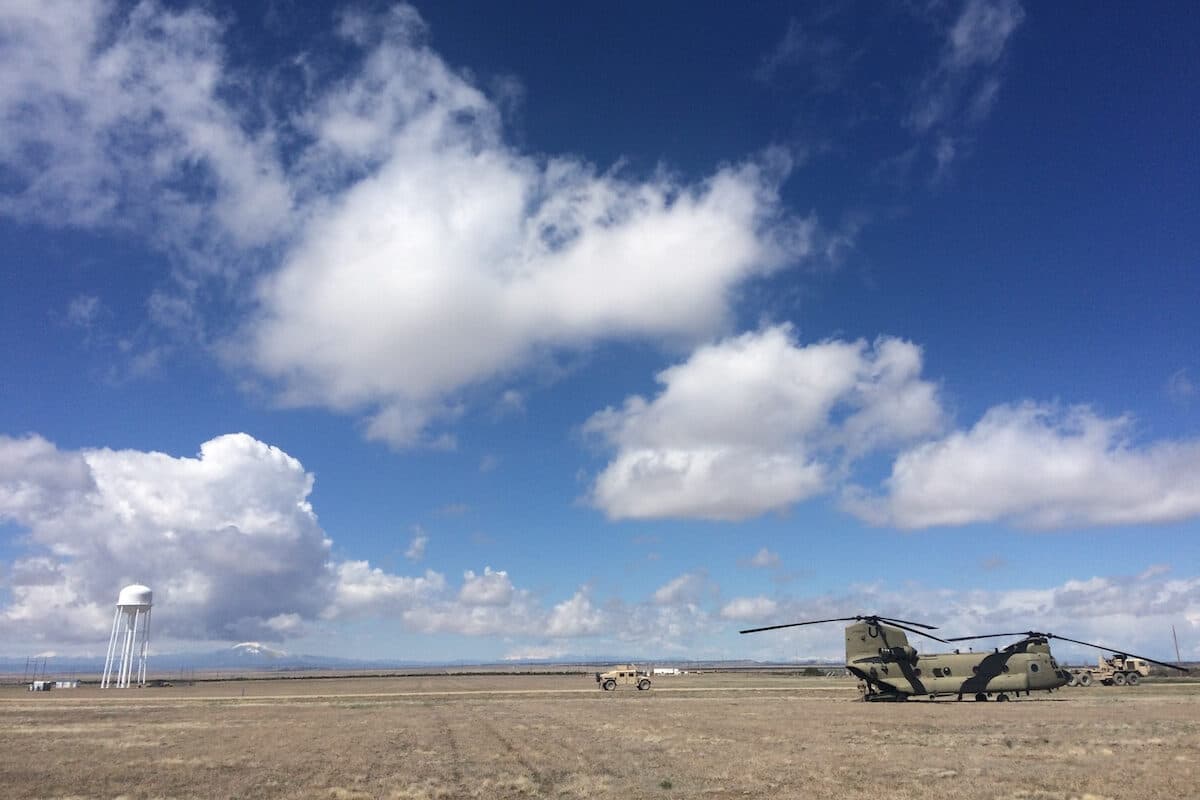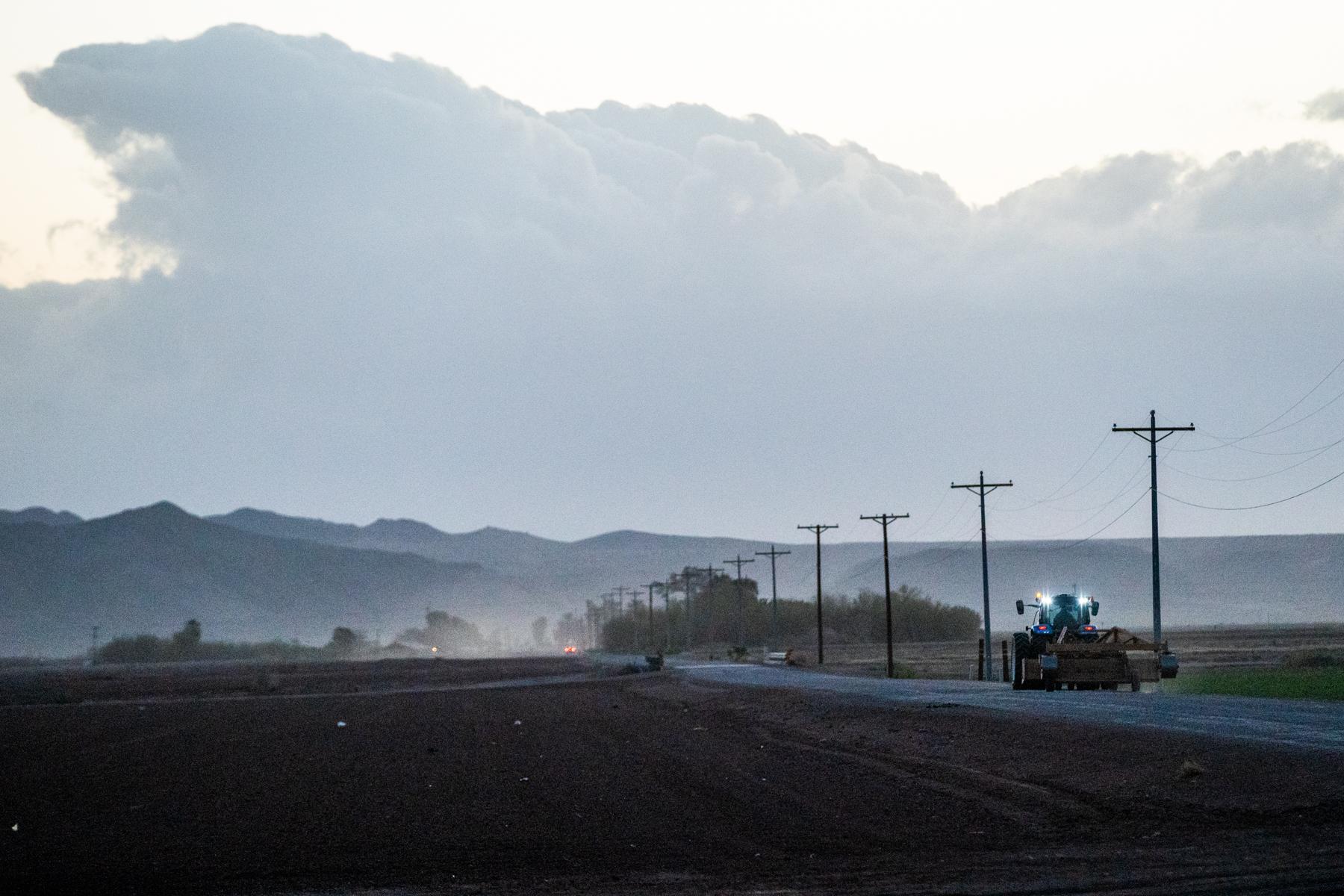
The states that use the Colorado River have put out their latest proposals on how to manage the river’s shrinking amount of water, and the two plans reveal that there are still big differences in how upstream and downstream states want to divvy up future cuts to their water consumption.
While state water negotiators say they’re committed to figuring out how they can compromise in the age of climate change when there is less water available to the 40 million people who rely on it, the Southern Ute tribal government in southwestern Colorado doesn’t believe either proposal addresses their concerns or helps them secure their water future.
The Southern Ute reservation is one of the many places in Colorado that rely on the Colorado River for a significant portion of their water. About half of Colorado Springs’ supply, and half of Denver’s supply that also serves other metro area cities like Lakewood, come from the river. The Ute Mountain Ute reservation also gets water from the Colorado River tributaries.
The proposals released last week by states in the Upper and Lower Basins of the Colorado River are one volley in ongoing negotiations to set rules for how water will be released to the states lower down on the river beginning in 2026. The U.S. Bureau of Reclamation will analyze and consider the two proposals.
“The Upper Basin and the Lower Basin are not in agreement, and put forward two fundamentally different plans,” said Kathryn Sorensen, a director of water research at Arizona State University.
She said Colorado, Utah, Wyoming, and New Mexico are arguing, “We live well within our means on the river. We don’t use all the water that we’re entitled to.” Those states want California, Arizona, and Nevada to figure out how to use less water, particularly in very dry years.
By contrast, the downstream states in the Southwest are saying, “We are all in this together. It is a river basin that we all jointly use,” Sorensen said. They want the seven basin states to more equally absorb future cuts to water use.
There has been less water available over the past two decades because of prolonged drought, which is likely to continue across the region and could further reduce the amount of water available in the Colorado River by about a quarter.
Up to now, much of the discussion about who suffers from the reduced amounts of water in the river has focused on Arizona, where some farmers have seen their water supplies dry up, and the state has limited housing development where water can’t be secured.
In their newly released proposal, Colorado and the other states that comprise the Upper Basin want to establish that they, too, have had to make sacrifices to deal with water shortages. As a result, Colorado and its neighbors say that it would be unfair to make all states in the basin absorb cuts to future water allocations.
The proposals don’t change anything for Coloradans in the short term.
It has been commonly thought that the 2026 rules, once they’re agreed upon, will be in place for the “long term,” which could mean about two decades. In last week’s proposal, however, the Upper Basin states suggested the rules should be revisited on a shorter timeline.
Becky Mitchell, Colorado’s chief negotiator for the Colorado River, said the idea isn’t to create uncertainty for water users. While that’s a risk, she said she wants to create opportunities to evaluate whether the water savings plans are working and make changes if they’re not.
One concern from Upper Basin states is that if the Lower Basin proposal goes forward, smaller upstream reservoirs in the river system — including Blue Mesa in Colorado — could be tapped more frequently to supplement water shortages in Southwestern states, Sorensen, the Arizona State University researcher, said.
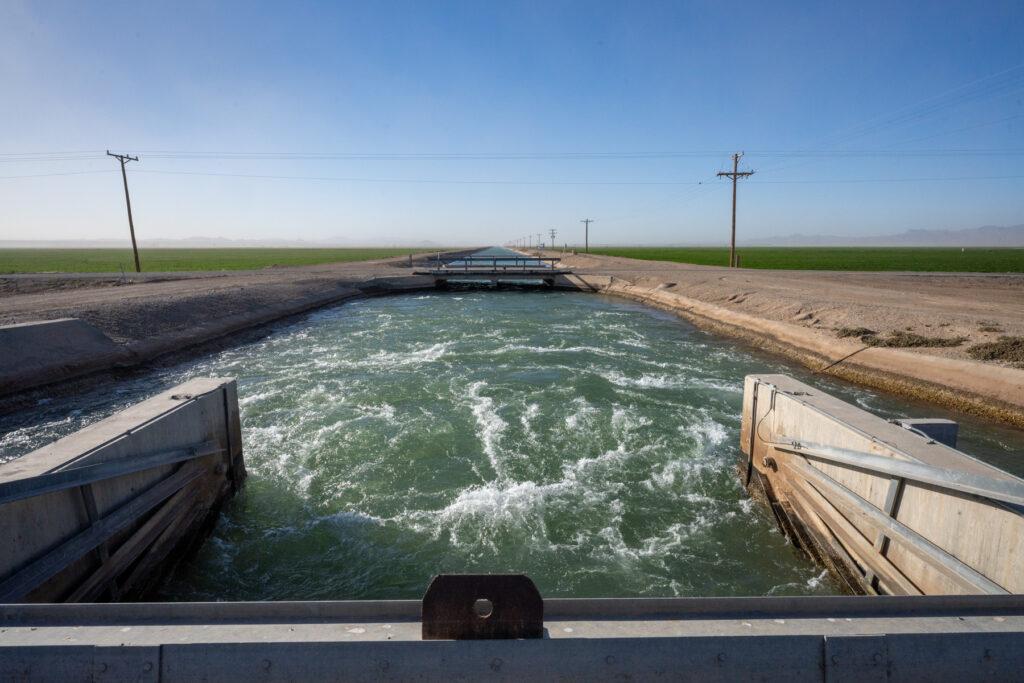
Tribes and the state government said Colorado already absorbs more cuts to its water use than they get credit for, and they want acknowledgment of that in the negotiation.
Lorelei Cloud, Vice Chairman of the Southern Ute Indian Tribe and a member of the Colorado Water Conservation Board, said the Colorado River allocations need to recognize that her tribe has been forced to receive less water than it is legally entitled to. The Lower Basin’s proposal to share future cuts to water use equally across the region doesn’t acknowledge that reality, she said.
As a result, “Their proposal to share in cuts with the Upper Basin is unacceptable to my tribe,” she said.
Mitchell said it’s similar for the rest of Colorado.
“We already take cuts,” she said. “That's the piece that I think is missing” from the Lower Basin’s proposal.
She explained that if the reservoirs get even lower, that will be because the snowpack is low, which means the Upper Basin states like Colorado will have already suffered the consequences. If that happens, she said, “We will have been taking cuts that whole way through.”
As an example of how that suffering has manifested already, she pointed to the Ute Mountain Ute tribe’s experience in 2021, when drought resulted in the reservation in southwestern Colorado getting just 10 percent of the water it has rights to.
Mitchell said as Colorado’s top negotiator, she will only support an agreement that allows tribes to get access to their full water rights.
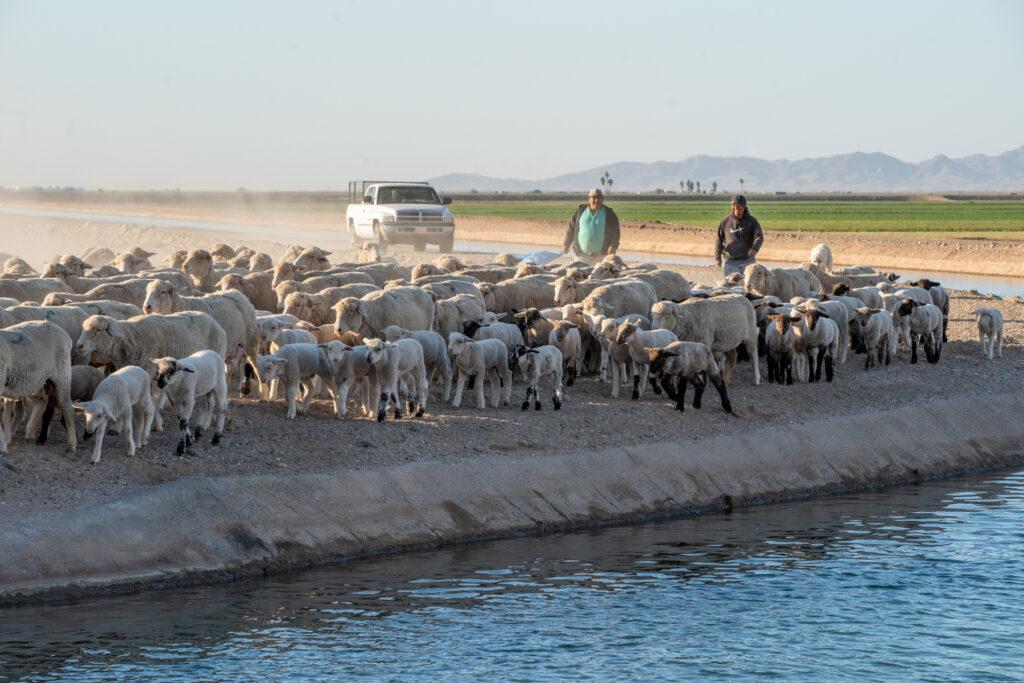
But Cloud is not satisfied with what she read in either basin’s proposal.
“The proposals don't include adequate language to protect tribal water rights, nor do they acknowledge the reliance on undeveloped tribal water in the Colorado River Basin,” Cloud said. “Tribes should be compensated for the undeveloped water because that water contributes to the propping up the Colorado River system,” she added.
Cloud said tribal needs will never be adequately addressed until tribes are a formal part of the decision-making process. She wants to have more honest discussions about this with the states and federal government agencies involved in the negotiations.
Another tribe that relies on the Colorado River, the Gila River Indian Community in Arizona, said it is working on its own proposal to present to the federal Bureau of Reclamation, as a third alternative to the basin states’ plans.
At the heart of the disagreement is how much water will be released from Lake Mead, and when.
Lake Mead is one of the two massive reservoirs that store Colorado River water and send it down to California, Arizona, and Nevada, where it supports households, businesses, farms, and ranches for tens of millions of people.
Those states have been depleting the reservoirs since industries, populations, and agriculture have all exploded in the region.
The Bureau of Reclamation ultimately sets the rules for how much water can come out of the reservoirs. For the rules that will take effect in 2026, Mitchell and the Upper Basin states want to make the amount of water released from Lake Mead better reflect the amount made available by nature year to year.
“The system will never be stable until water users only rely on what Mother Nature provides,” Cloud agreed.
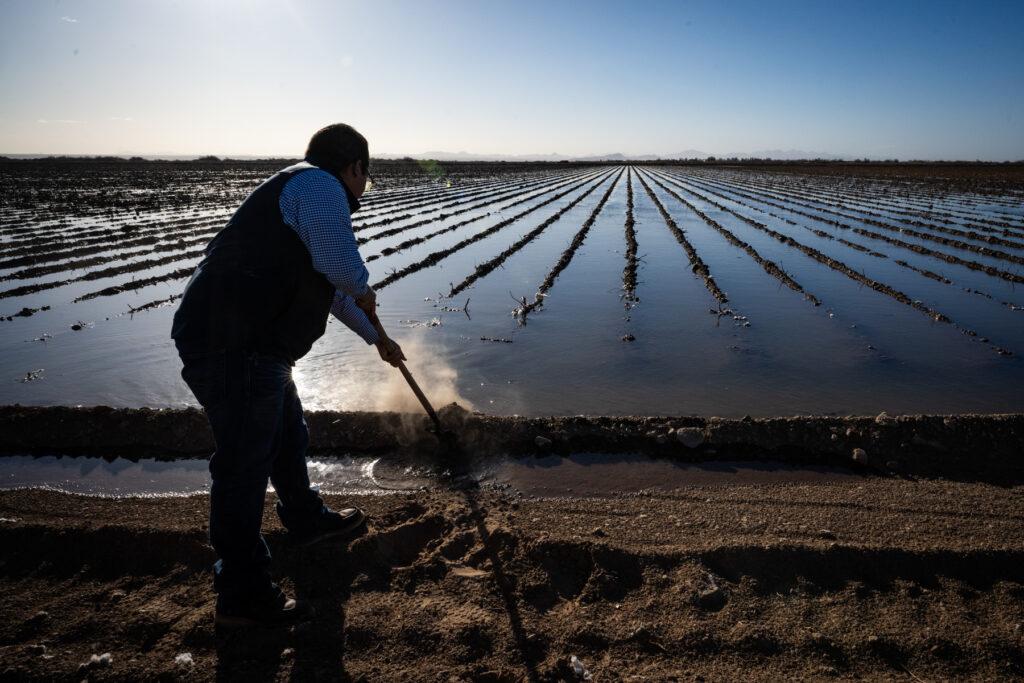
The Upper Basin proposal does not suggest any mandatory cuts to the water that upstream states are allotted. Instead, it says that through a hypothetical separate agreement, those states could do voluntary things like drain water from smaller reservoirs, or thoroughly pursue a program to pay farmers not to plant in certain years, but only if the Lower Basin takes “parallel” steps first.
Paying farmers not to plant on a rotating basis, or paying them to plant different crops, are some of the ways analysts have agreed that Westerners could conserve significant amounts of water.
Mitchell expects to hear back from Reclamation officials sometime this spring, to see the Bureau’s analysis of the two proposals plus any other proposals that get submitted, like the one that the Gila River tribe is working on.
Ultimately, the Bureau gets to decide how the reservoirs are governed, and it could choose to take pieces from any of the proposals on the table. Mitchell said negotiators will keep trying to reach a draft compromise by the end of 2024.
“It is helpful to remember that these types of negotiations nearly always go down to the wire, and we’re getting very close, but there is still a little bit of time for people to compromise,” Sorensen said. “I hope that people can come to the table and work this out because right now it doesn’t seem like we’re on a super good path.”
CPR’s Tom Hesse contributed reporting
- Lawmakers will start 2024 with a new drought playbook. Is it bold enough for a hotter, drier Colorado River?
- Plan for water cuts from 3 Western states is enough to protect Colorado River, federal officials say
- States have started negotiating new rules to keep the Colorado River from crashing. Here’s what they want
- Feds roll back Colorado River water cuts after wet winter as states negotiate long-term drought rules




